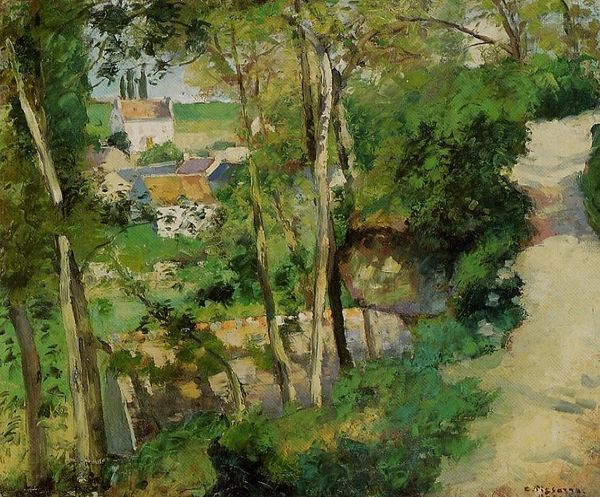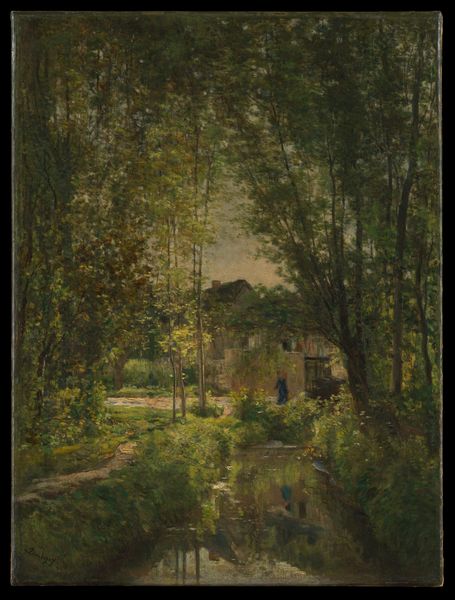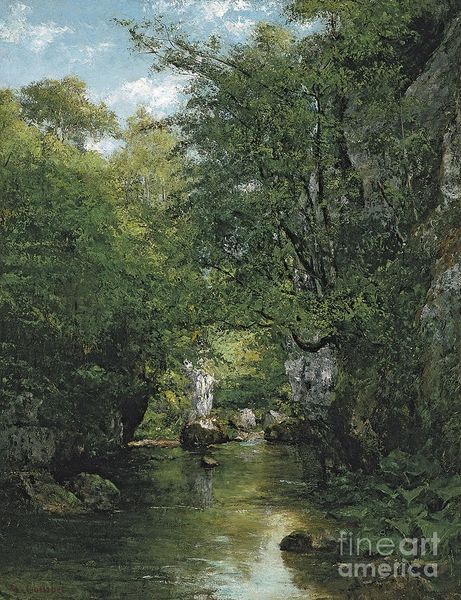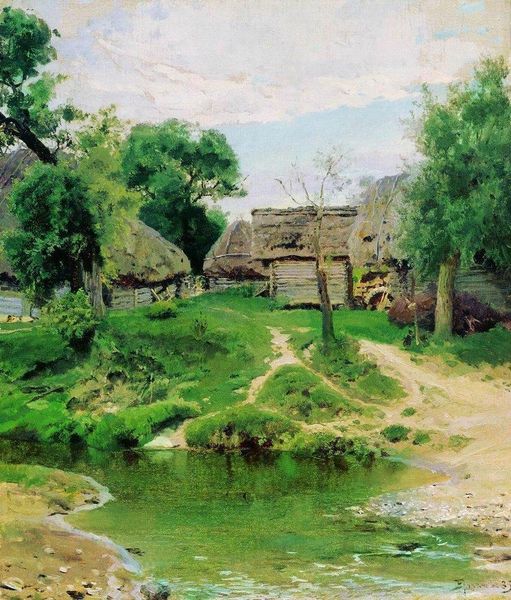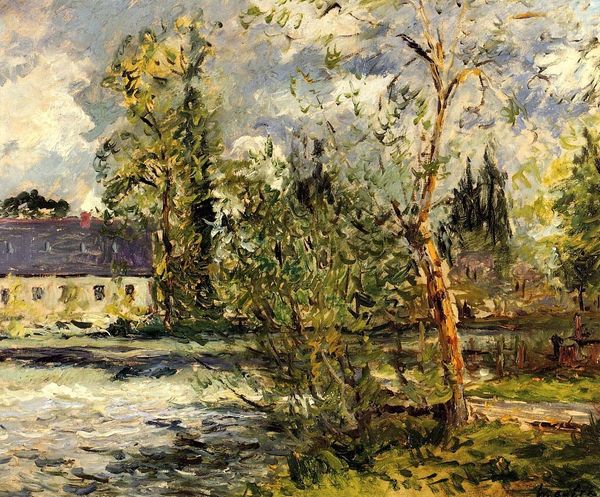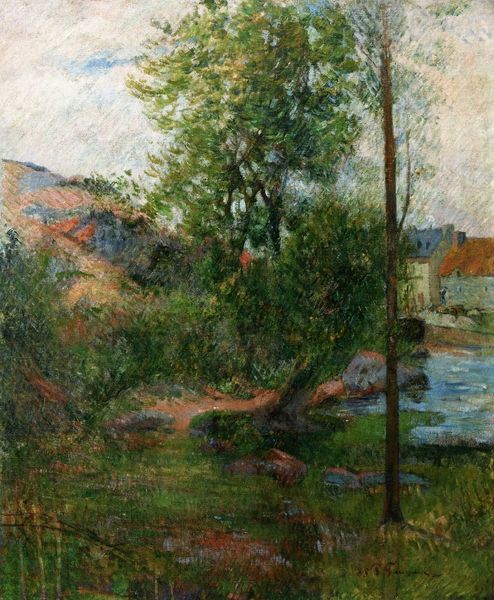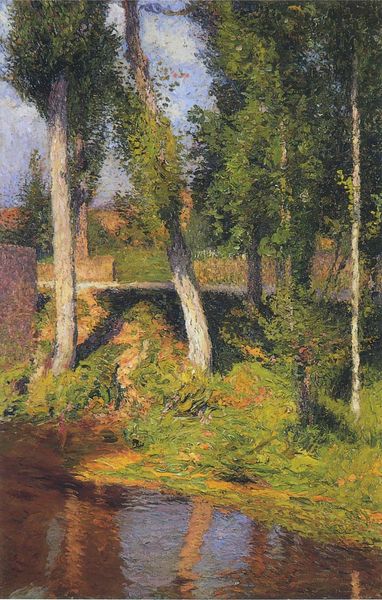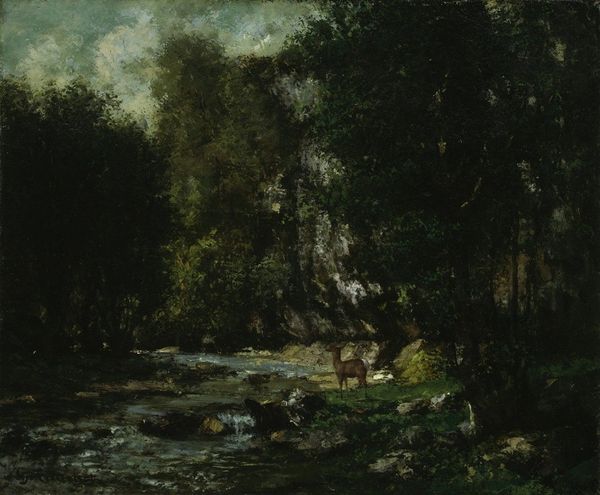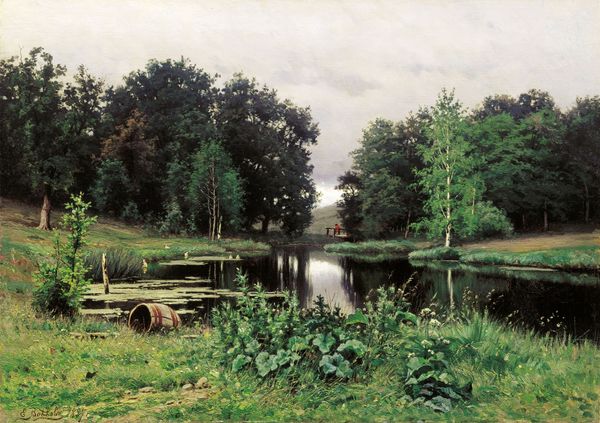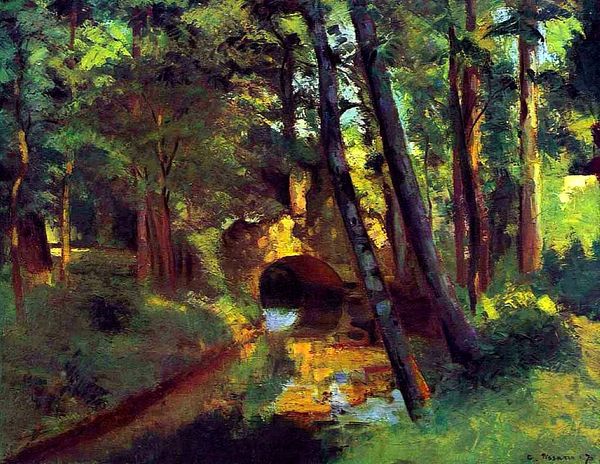
Copyright: Public domain
Curator: This is Vasily Polenov’s “The Mill on the Source of the River Vel,” painted in 1874. The canvas presents us with a humble scene of rural Russia. Editor: It’s remarkably atmospheric, isn't it? The overwhelming greens create a certain dense, cloistered feel, broken only by the faint shimmer of the water's surface. There is this pervasive sense of stillness and deep quiet. Curator: Absolutely. Note Polenov's use of oil paint to capture light and shadow. Observe the brushstrokes. They show he wanted to convey not just the image, but the very essence of the environment, especially its relation to the modest architectural features—the stones, timbers, the very building material speak to localized construction and accessible materials. Editor: Indeed, Polenov masterfully utilizes color to define space, drawing your eye into the receding landscape. Look at how the dense dark greens of the foreground gradually transition into softer hues, evoking a subtle depth. This feels like a masterful study of form and the manipulation of perspective through color. The way that it has this Baroque dynamism in its forms. Curator: Yes, it is an interesting juxtaposition of natural and man-made elements. The painting hints at labor – the shaping of the mill, the channeling of water for its use – and this provides an additional layer to how we consume this kind of bucolic vision, particularly given the artist's personal background as coming from a noble family that owned a lot of land and peasant labor. Editor: And what does the scene itself evoke for you? The semiotic impact seems self-evident: a romantic yearning for an undisturbed connection with nature. A nostalgic tableau of the rural life...a pre-industrial simplicity. I wonder what the average urban person at that time thought of this sort of imagery? Curator: Considering the socio-political tensions present at the time, Polenov’s work provides a lens through which to explore evolving notions of national identity and perhaps even implicit political undertones, although these interpretations have often been challenged by claims of this work merely being an aesthetic or idyllic retreat into art for art's sake. Editor: A thought-provoking perspective indeed! It enriches the experience of witnessing this ostensibly placid scene by prompting us to recognize its artistic complexity. Curator: Indeed, every aspect is both representational and representative of an historical nexus that is both unique to the creator, but is itself a continuation of various painterly traditions. Editor: An analysis of art production in its historical context enriches and gives a social dimension to the appreciation of "beauty".
Comments
No comments
Be the first to comment and join the conversation on the ultimate creative platform.
